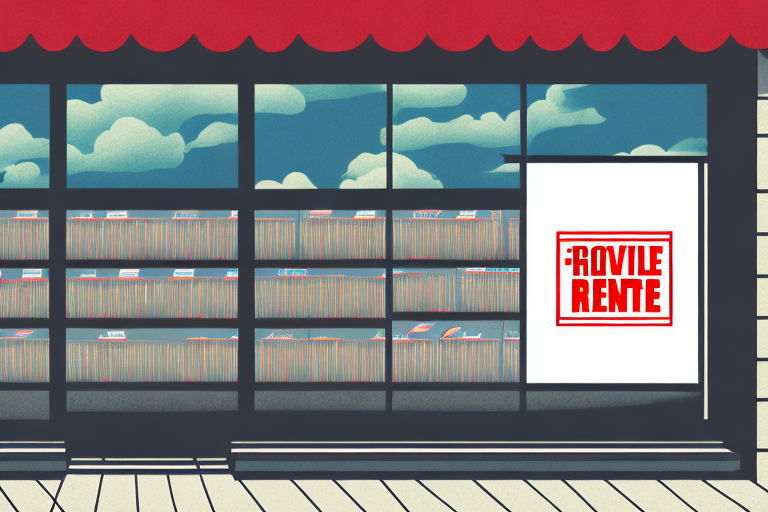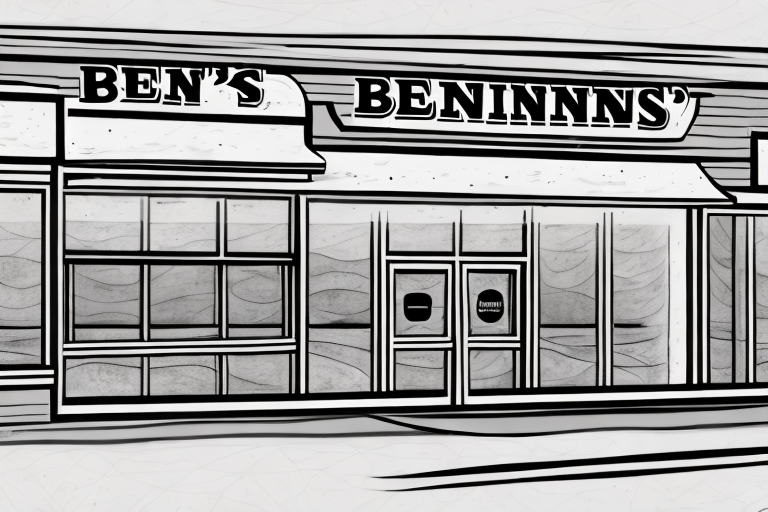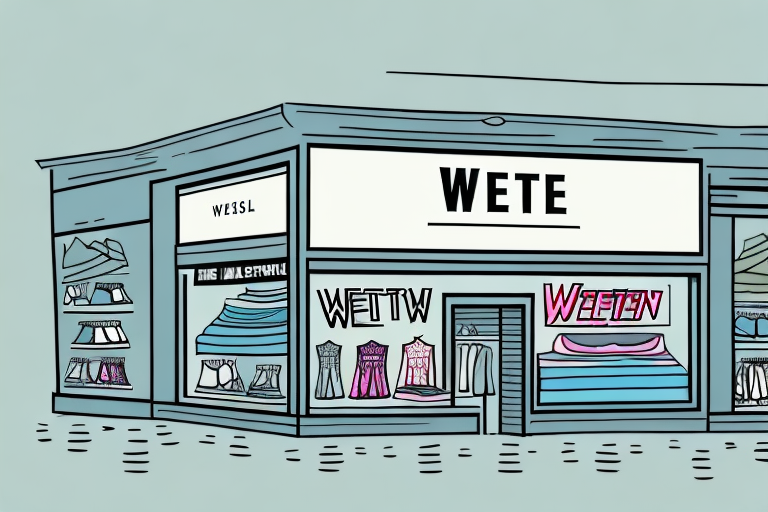Blockbuster, once the dominant force in the video rental industry, experienced a remarkable decline that ultimately led to its collapse. In this article, we will delve into the rise and fall of Blockbuster, exploring the factors that contributed to its downfall and analyzing the mistakes made along the way. By understanding the story of Blockbuster, we can learn valuable lessons for franchise businesses in the digital age.
Introduction to the Case
The story of Blockbuster stands as a cautionary tale for any company navigating rapidly changing market conditions. Once the undisputed leader in the movie rental business, Blockbuster’s empire spanned over 9,000 stores worldwide, making it a household name in video rental. However, the company’s inability to adapt to emerging trends and new technologies ultimately led to its downfall. As online streaming began to reshape the way customers consumed movies, Blockbuster clung to its traditional business model, failing to recognize the seismic shift in consumer preferences. The company’s slow response to the rise of streaming services, coupled with mounting competition and a rigid commitment to its brick-and-mortar stores, left it unable to compete in a market that was evolving at breakneck speed. Ultimately, Blockbuster’s failure to innovate and respond to changing market dynamics resulted in bankruptcy, serving as a stark reminder of how even the most successful companies can falter if they fail to evolve with the times.
Understanding the Rise and Fall of Blockbuster
Before the emergence of online streaming services, Blockbuster was the go-to destination for movie rentals. With its extensive library of films and convenient store locations, Blockbuster enjoyed widespread success and became a household name. However, the seemingly unstoppable rise of Blockbuster was soon followed by its rapid decline.
One of the main factors that contributed to Blockbuster’s downfall was the shift in consumer behavior towards digital media. As online streaming services like Netflix and Hulu gained popularity, more and more people started to prefer the convenience of streaming movies and TV shows from the comfort of their own homes. This shift in consumer preferences greatly impacted Blockbuster’s business model, as it heavily relied on physical store rentals.
Blockbuster failed to adapt to customers preferences, which were moving towards digital and online streaming options, ultimately leading to its decline.
The Evolution of Video Rental Industry
The video rental industry underwent significant transformations over the years, reshaping consumers’ preferences and behaviors. In the early days, video rental stores were the primary means of accessing movies outside of theaters. However, with advancements in technology, the industry witnessed the emergence of DVDs and the subsequent decline of VHS tapes. This shift in format presented both opportunities and challenges for Blockbuster, as dvd rentals became a core part of Blockbuster’s business model, driving its growth through physical stores and mail-based services.
Blockbuster successfully adapted to the transition from VHS to DVDs, acquiring numerous video rental companies and expanding its presence. It seemed like Blockbuster was invincible, but the rise of digital streaming services would prove to be its biggest hurdle yet.
As digital streaming services gained popularity, consumers began to favor the convenience and instant access they provided. People started to access videos online through streaming platforms, fundamentally changing the way entertainment was consumed. Companies like Netflix and Hulu revolutionized the way people consumed movies and TV shows, offering a vast library of content that could be accessed anytime, anywhere. This shift in consumer behavior posed a significant threat to traditional video rental stores like Blockbuster.
Despite attempts to compete with digital streaming services by launching their own online platforms, Blockbuster struggled to keep up. The company’s late entry into the digital market and its failure to adapt quickly enough ultimately led to its downfall. In 2010, Blockbuster filed for bankruptcy, marking the end of an era for the video rental industry.
A Brief History of Blockbuster’s Success
Founded in 1985, Blockbuster quickly gained momentum, capitalizing on a growing demand for movie rentals. By the 1990s, it had become the undisputed leader in the industry, boasting thousands of store locations and an impressive customer base. Blockbuster’s success was largely attributed to its innovative business model, which combined the convenience of in-store rentals with late fees and high rental fees that incentivized returning movies on time and contributed significantly to early revenue.
However, Blockbuster’s triumph would be short-lived as the digital revolution loomed on the horizon, threatening to disrupt the entire industry.
Business Model Flaws: The Hidden Weaknesses Behind Blockbuster’s Empire
At the heart of Blockbuster’s failure was a business model that could not withstand the pressures of a changing industry. For years, Blockbuster relied on late fees and high rental charges as a primary source of revenue, a strategy that worked well in the era of physical stores and VHS cassettes. However, as emerging trends like online streaming began to take hold, this approach quickly became outdated. The launch of Blockbuster Online in 2004 was an attempt to modernize, but it arrived too late to make a meaningful impact. Unlike Netflix’s subscription-based model, which offered unlimited rentals for a flat monthly fee, Blockbuster’s system was bogged down by legacy practices and high overhead costs associated with maintaining thousands of brick and mortar locations. The company’s inability to scale its business model to compete with the low-cost, online-based strategies of its rivals left it vulnerable. As streaming technology advanced and consumer expectations shifted, Blockbuster’s revenue streams dried up, exposing the hidden weaknesses that had been masked by years of market dominance.
The Emergence of Digital Streaming Services
The advent of digital streaming services, spearheaded by companies like Netflix, marked a fundamental shift in consumer behavior. Suddenly, the idea of driving to a physical store to rent a movie seemed outdated and inconvenient. Streaming services offered instant access to an extensive collection of films, available from the comfort of one’s own home.
Unfortunately, Blockbuster failed to foresee the potential of digital streaming and was slow to adapt to the changing landscape. When Netflix first approached Blockbuster with a partnership offer, the response was dismissive, underestimating the impact that online movie rentals would have on the industry.
In 2000, Reed Hastings, the CEO of Netflix, offered to sell Netflix to Blockbuster for $50 million. Blockbuster declined the deal to purchase Netflix, missing a critical opportunity that could have changed the future of both companies. This decision not to pursue the deal with Hastings is now seen as a pivotal moment, as the failure to purchase Netflix ultimately contributed to Blockbuster’s decline.
Blockbuster’s Reluctance to Embrace Change
Blockbuster’s reluctance to embrace change played a crucial role in its downfall. Despite the signs of a shifting market, Blockbuster remained steadfast in its commitment to the traditional brick-and-mortar model. The company failed to recognize the disruptive power of emerging technologies and instead doubled down on its existing strategy, even as it became clear that this approach did not work anymore due to evolving consumer preferences and technological advancements.
While Blockbuster eventually entered the online market, its attempts at online streaming were lackluster and unable to compete with the seamless experience provided by dedicated streaming platforms.
The Impact of Online Movie Rentals on Blockbuster
As online movie rentals gained traction, Blockbuster’s customer base began to dwindle. Consumers were drawn to the convenience of streaming, as well as the absence of late fees that had long been a cornerstone of Blockbuster’s business model. As online customers became the primary focus for new competitors, Blockbuster was left behind in adapting to this shift. The decline in rental revenue, coupled with increasing overhead costs, pushed Blockbuster into a difficult financial situation.
Blockbuster struggled to adapt its pricing structure to compete with the monthly subscription models offered by streaming services. The company attempted to introduce subscription-based plans, but these efforts were insufficient to reverse the tide or regain lost ground.
How Netflix Revolutionized the Movie Rental Industry
While Blockbuster faltered, Netflix, the young upstart that challenged Blockbuster’s dominance, seized the opportunity and revolutionized the movie rental industry. By aligning itself with the emerging trend of online streaming, Netflix offered customers an unrivaled level of convenience and choice. With its successful transition from a DVD-by-mail service to a streaming giant, Netflix became synonymous with at-home entertainment, leaving Blockbuster in its wake.
Blockbuster’s Failed Attempt at Online Streaming
Realizing the threat posed by Netflix, Blockbuster made a belated attempt to catch up by launching its own online streaming service. However, the offering fell short, both in terms of content selection and user experience. Blockbuster’s streaming service lacked the depth and breadth of Netflix’s library, making it unappealing to consumers.
Additionally, Blockbuster’s streaming service suffered from technical issues and a clunky interface, further hindering its potential for success. Without a compelling value proposition, Blockbuster’s online streaming service failed to gain traction, ultimately contributing to the company’s demise.
The Shift in Consumer Preferences: Convenience vs. In-Store Experience
One of the critical factors that led to Blockbuster’s downfall was a shift in consumer preferences. While Blockbuster had once offered a unique in-store experience, complete with physical copies of movies and the opportunity to browse through shelves, consumers increasingly valued convenience over that experience. The traditional model of renting movies in-store lost its appeal as customers began to seek easier and faster ways to access entertainment.
The ability to instantly stream movies and TV shows at any time, from any device, became paramount, leaving Blockbuster’s lingering commitment to the in-store rental model obsolete.
Poor Customer Satisfaction: Where Blockbuster Lost Its Audience
Blockbuster’s decline was accelerated by its failure to keep customers satisfied in an era of rapidly changing expectations. The company’s notorious late fees and high rental prices became a major source of frustration, driving customers to seek out more flexible and affordable alternatives. While Blockbuster Online was introduced in an effort to win back disillusioned customers, it failed to match the convenience and value offered by Netflix and other online streaming services. As new technologies made it easier for consumers to access movies without leaving home, Blockbuster’s focus on physical stores and reluctance to invest in streaming left it unable to compete. The company underestimated how quickly customers would embrace online streaming, and by the time it tried to catch up, many had already made the switch. In the end, Blockbuster’s inability to adapt to emerging trends and its failure to prioritize customer satisfaction played a significant role in its downfall, as customers flocked to competitors who better understood their needs.
The Downfall of the Brick-and-Mortar Model: Blockbuster’s Inability to Adapt
Blockbuster’s downfall can be attributed, in part, to its inability to adapt to the changing marketplace. The decline and eventual closure of blockbuster stores symbolized the company’s failure to evolve with the times. While the writing was on the wall, Blockbuster failed to proactively respond to the evolving needs and preferences of its target audience. The company’s persistence in clinging to the traditional brick-and-mortar model ultimately proved fatal.
As other video rental options expanded, including automated kiosks like Redbox, Blockbuster struggled to compete. The company failed to recognize and adapt to shifts in the video rental and streaming markets, which accelerated its decline. Its large physical footprint and accompanying expenses became a burden as consumers increasingly turned to more convenient alternatives.
Blockbuster’s Debt Accumulation and Financial Struggles
Adding fuel to the fire, Blockbuster faced significant financial struggles due to its accumulation of debt. As the company invested heavily in new store openings and tried to maintain an extensive physical presence, it found itself burdened with mounting costs. Declining revenues made it even more difficult for Blockbuster to recover, compounding the financial strain and limiting its ability to respond effectively to the industry’s changing dynamics.
Blockbuster’s inability to adapt its financial strategy or cut costs in a timely manner further weakened its position, leaving the company vulnerable to competition and market forces.
The Role of Redbox in Blockbuster’s Decline
While Netflix was undoubtedly a pivotal player in Blockbuster’s decline, it was not the only contender. Redbox, an automated kiosk rental service, also played a significant role. Redbox presented a convenient, low-cost alternative to Blockbuster’s traditional store rental experience, capturing a segment of customers looking for a quick and affordable movie option.
With Redbox’s emergence, Blockbuster faced additional competitive pressure and struggled to counter the convenience and affordability that automated kiosks offered.
Competition from On-Demand Services: Hulu, Amazon Prime, and Others
As streaming technology improved and demand for on-demand content skyrocketed, numerous competitors entered the scene. Services like Hulu, Amazon Prime, and others challenged Netflix’s dominance, intensifying the competition in the industry.
Blockbuster, already on shaky ground, failed to carve out its place in this new ecosystem. Its inaction in the face of increased competition further eroded its customer base and exacerbated the company’s financial difficulties.
Blockbuster’s Missed Opportunities: Acquisition Offers and Partnerships
Throughout its decline, Blockbuster had several opportunities to align itself with potential partners or explore acquisition offers. However, the company’s leadership failed to capitalize on these opportunities, dismissing them as either unimportant or not aligned with its vision.
The main reason Blockbuster missed these key opportunities was due to critical leadership decisions and resistance from influential figures. The CEO at the time, John Antioco, initially recognized the need for change, but faced opposition from activist investor Carl Icahn, a prominent Blockbuster shareholder. Icahn’s influence led to strategic conflicts and ultimately contributed to Blockbuster’s failure to adapt. After Antioco’s departure, new CEO Jim Keyes doubled down on brick-and-mortar operations, further compounding the company’s problems. Former Blockbuster shareholder Niko Celentano later criticized these leadership choices, blaming them for the company’s downfall and even calling for the CEO to resign immediately due to these repeated strategic errors. The main reason for Blockbuster’s failure can be traced to these missed opportunities and the inability of its leadership and shareholders to embrace necessary change.
Had Blockbuster been more open to collaboration and strategically pursued partnerships, such alliances could have bolstered its position in the industry and provided a lifeline to weather the storm of the digital revolution.
Learning from Failure: Lessons for Franchise Businesses in the Digital Age
The story of Blockbuster serves as a cautionary tale for franchise businesses operating in the digital age. The ability to adapt and embrace innovation is crucial to survival and long-term success. In a rapidly evolving marketplace, franchise businesses must be keenly aware of changing consumer preferences and emerging technologies. Adapting strategies and embracing innovation is also essential to increase profitability and ensure long-term success.
Blockbuster’s failure demonstrates the importance of remaining vigilant, staying ahead of the curve, and anticipating shifts in the industry. Franchises must continuously assess their strategies, pivot when necessary, and embrace new approaches to meet the evolving needs of their target audience.
How Blockbuster Became a Case Study in Business Mismanagement
Blockbuster’s decline also provides a cautionary tale of business mismanagement. From failing to recognize the threat posed by emerging technologies to accumulating debt and dismissing partnership opportunities, Blockbuster’s leadership made a series of critical missteps that sealed the company’s fate.
Businesses can learn from Blockbuster’s mistakes, emphasizing the importance of adaptability, balanced financial strategies, and a willingness to embrace change. Effective marketing is also crucial for maintaining brand relevance and avoiding the pitfalls of mismanagement, as relying solely on brand recognition without strong marketing efforts can lead to failure. The Blockbuster case study serves as a constant reminder that even established, seemingly invincible franchises are not immune to the forces of disruption.
The Last Store Standing: Tales from the Final Days of Blockbuster
In a world now dominated by digital streaming services, only one Blockbuster store remains standing. Over the past few years, the remaining Blockbuster stores gradually closed, leaving just the Bend, Oregon location as the last of its kind. This store stands as a testament to an era long gone. Its survival is a testament to the nostalgia and the unique in-store experience Blockbuster once offered to its customers.
Visiting the last Blockbuster store is a journey through time, serving as a reminder of the rise and fall of a franchise that once dominated the video rental industry. Within a few years after Blockbuster’s peak, only one store remained as a symbol of the company’s former dominance. It is a bittersweet reminder of an industry disrupted and the valuable lessons learned from Blockbuster’s ultimate downfall.
In conclusion, the decline of Blockbuster serves as a stark reminder of the importance of adaptability and innovation in the face of rapid technological advancements. Blockbuster’s reluctance to embrace change, especially over the past few years, coupled with its financial struggles and missed opportunities, ultimately led to its downfall. As the digital age continues to reshape industries, franchise businesses must remain vigilant, anticipating shifts in consumer behavior and leveraging emerging technologies. By learning from the mistakes of Blockbuster, businesses can navigate the tumultuous terrain of the modern marketplace and thrive in an ever-evolving landscape.
Conclusion: The Legacy of Blockbuster’s Franchise Failure
Blockbuster’s story remains a powerful lesson for businesses across all industries. Its dramatic fall from being one of the most successful companies in the world to a single remaining store in Bend, Oregon, underscores the dangers of complacency and the critical importance of adapting to new technologies and changing market conditions. The company’s failure to evolve its business model, invest in online streaming, and respond to shifting customer preferences ultimately led to its bankruptcy and serves as a cautionary tale for franchise businesses everywhere. Today, Blockbuster’s legacy is a reminder that even the most dominant brands can quickly become obsolete if they fail to innovate and put the customer first. For companies hoping to avoid a similar fate, the lessons are clear: embrace emerging trends, listen to your customers, and never underestimate the power of technological disruption.








1 thought on “The Decline of Blockbuster: A Franchise Failure”
Comments are closed.